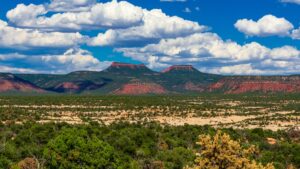Politics
Trump DOJ Strikes Back at Biden’s Land Grab With Game-Changing Ruling
The Trump administration’s Justice Department has issued a legal opinion affirming that the President has the power to reverse national monument designations made by past administrations. The ruling directly challenges a longstanding interpretation of the Antiquities Act, which many believed prohibited such reversals once monument status was granted.
This new opinion opens the door for President Trump to potentially undo several national monument designations made in the final stretch of President Biden’s term—specifically those covering more than 850,000 acres in California’s Chuckwalla and Sáttítla Highlands. Those areas were made off-limits to energy development, mineral extraction, and other uses, drawing criticism from local industry and property rights advocates.
Under the Trump DOJ’s interpretation, the president has full authority to reverse course.
“The President of the United States is hereby authorized, in his discretion, to declare by public proclamation historic landmarks, historic and prehistoric structures, and other objects of historic or scientific interest that are situated upon the lands owned or controlled by the Government of the United States to be national monuments, and may reserve as a part thereof parcels of land, the limits of Revocation of Prior Monument Designations which in all cases shall be confined to the smallest area compatible with the proper care and management of the objects to be protected,” the opinion stated.

Bears Ears as Seen From Natural Bridges National Monument, Utah
The Biden administration’s designations were seen by critics as a blow to energy independence and local economies, with opponents arguing that such moves often come at the expense of working-class communities.
President Trump has long expressed skepticism toward sweeping federal land protections, especially those enacted without input from local stakeholders. In 2017, he took action to reduce the size of two major national monuments in Utah designated under President Obama.
“If the President can declare that his predecessor was wrong regarding the value of preserving one such object on a given parcel, there is nothing preventing him from declaring that his predecessor was wrong about all such objects on a given parcel,” the opinion piece added.
Axie Navas, designations director of conservation programs and policy at The Wilderness Society, criticized the opinion, saying: “This is the legal equivalent of throwing a dart at the wall, then painting a bullseye around it.”
“This opinion flies in the face of a century of interpretation of the Antiquities Act. Americans overwhelmingly support our public lands and oppose seeing them dismantled or destroyed.”
Trump’s first presidency saw major shifts in how national parks and public lands were handled. In 2017, he shrank two large national monuments in Utah—Bears Ears and Grand Staircase-Escalante—by a combined 2 million acres. Trump also pushed for more energy development on federal land.
His administration opened areas near Arches, Canyonlands, and the Grand Canyon to oil and gas leasing and approved drilling in the Arctic National Wildlife Refuge. He argued this would boost jobs and energy independence. But in 2020, Trump signed the Great American Outdoors Act, a rare bipartisan win. It secured $9.5 billion to fix the national parks’ maintenance backlog and permanently funded the Land and Water Conservation Fund at $900 million a year.







